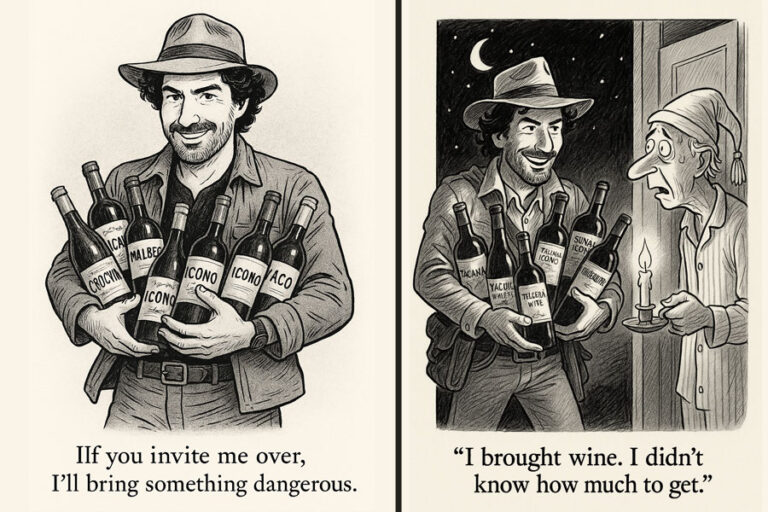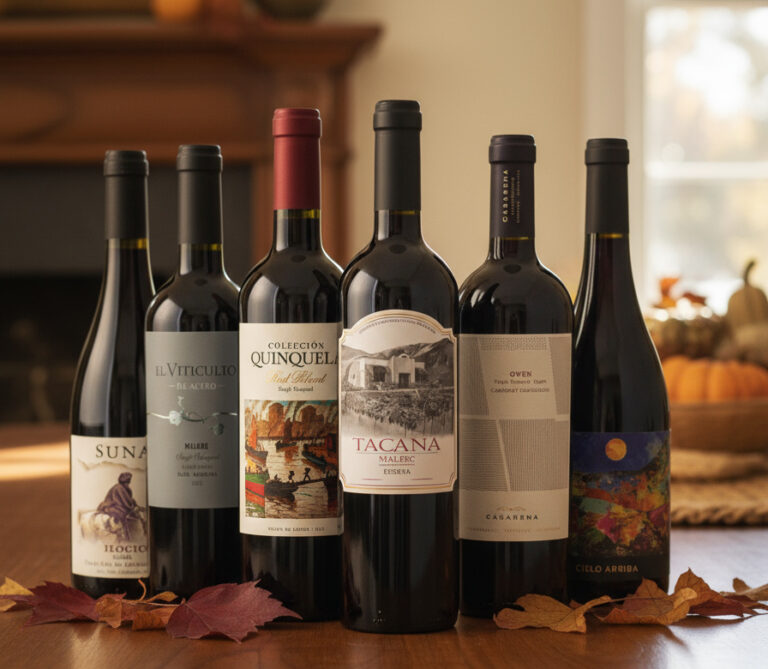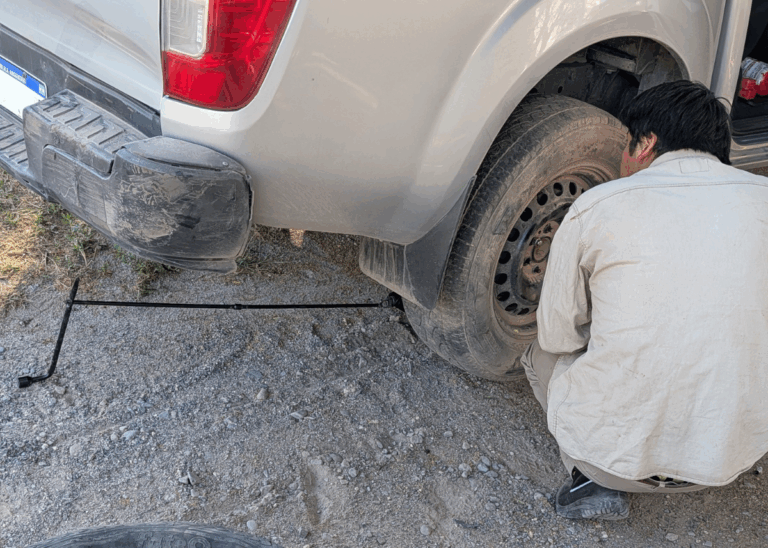[et_pb_section fb_built=”1″ _builder_version=”4.11.1″ _module_preset=”default” global_colors_info=”{}”][et_pb_row _builder_version=”4.11.1″ _module_preset=”default” global_colors_info=”{}”][et_pb_column type=”4_4″ _builder_version=”4.11.1″ _module_preset=”default” global_colors_info=”{}”][et_pb_text _builder_version=”4.11.1″ _module_preset=”default” hover_enabled=”0″ global_colors_info=”{}” sticky_enabled=”0″]
Grapes from a single vineyard at 8,694 feet puts Agustín Lanús’ malbec Salvaje among the highest wines we’ve ever sourced (there are but a handful of higher operational vineyards in the world).
We told you, at the end of last year, of how Agustín ferments Salvaje in a concrete egg – allowing the malbec to breathe (silk-ifying the tannins) without muddling the expression of the terroir.
This week we explain just what it is that makes the terroir, in a place called Cachi, so special.
More on that in a moment. But first, our resident wine expert Julien Miquel reminisces on our year of world travel through wine… from the forgotten grape of the Argentine mountains… to a trip up the California coast… modern & traditional wines of Italy… and a Spanish collection showcasing the incredible variety of their ancient wine culture…
[/et_pb_text][et_pb_video src=”https://youtu.be/Gh_jhVlbGBM” module_id=”video” _builder_version=”4.11.1″ _module_preset=”default” width=”70%” width_tablet=”85%” width_phone=”95%” width_last_edited=”on|phone” module_alignment=”center” global_colors_info=”{}”][/et_pb_video][et_pb_text _builder_version=”4.11.1″ _module_preset=”default” global_colors_info=”{}”]
The Silent Stone Cont’d
The Calchaquí Valley (or, more accurately, Valleys plural) lies in a far corner of northwestern Argentina. The valley itself runs north-south along the spine of the Andes mountains (although the valley is technically in the pre-Andean mountains).
[/et_pb_text][et_pb_image src=”https://bonnerprivatewines.com/wp-content/uploads/2022/01/CalchaquiMap.png” title_text=”CalchaquiMap” align=”center” _builder_version=”4.11.1″ _module_preset=”default” global_colors_info=”{}”][/et_pb_image][et_pb_text _builder_version=”4.11.1″ _module_preset=”default” global_colors_info=”{}”]
Marking the valley’s northern fringe is a big mountain called the Nevado de Cachi.
[/et_pb_text][et_pb_image src=”https://bonnerprivatewines.com/wp-content/uploads/2022/01/NevadodeCachi.png” title_text=”NevadodeCachi” align=”center” _builder_version=”4.11.1″ _module_preset=”default” global_colors_info=”{}”][/et_pb_image][et_pb_text _builder_version=”4.11.1″ _module_preset=”default” hover_enabled=”0″ global_colors_info=”{}” sticky_enabled=”0″]
From our own ranch at Gualfin, you can almost always see the peak, usually snowcapped, looming silently over the high plains. Cachi means “the silent stone” in the long extinct Cacán language (a dialect spoken by the local tribes hundreds of years ago).
Maybe “silent” was once a synonym for weak. The stone crumbles easily and rockfalls, caused by hurricane strength winds, are common enough to deter hikers and climbers from attempting to reach Cachi’s summits (many of which have only been reached once).
But as long-time readers will know: where the soil is poor, the wine is good.
In the foothills of the Nevado lies the town of Cachi, a small outpost with a sixteenth century church (one of the earliest in the Americas – the earliest being Santa María la Menor, completed in 1541, in what is now the Dominican Republic). The land is too barren to support a forest. The wooden beams within the old church come from the wood of giant cacti.
The vines grow a short way outside town. Planted by a Swiss mountaineer, they are now highly prized for their quality and purity. As with the rest of the Calchaquí, winemakers using Cachi grapes either opt for a French style wine (you could compare the merlot, only half jokingly, to a great St. Emilion), or an obsessive focus on purity.
As we noted, Agustín Lanús has gone for purity in his take on Cachi malbec, opting for no oak and fermentation in a concrete egg (oxidizing the tannins ever so slightly without changing the flavor profile). Shipments should begin later this month (pending snow storms).
Until next time,
The Wine Explorer
[/et_pb_text][/et_pb_column][/et_pb_row][/et_pb_section]



